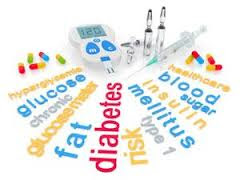Juvenile "Type1" Diabetes
The purpose of this Juvenile
Diabetes health campaign was to educate parents and youth about the dynamics of
Diabetes. This campaign was also responsible for advocating healthy food
choices and lifestyles for individuals who live with this chronic disease every
day.

My target audience for this campaign did not change because our goal was to help better the lives of youth and parents of children who currently have Juvenile “Type1” Diabetes. However, I believe this campaign did raise more awareness for other individuals who were not aware of this disease.
Campaign Objectives:
- Raise Awareness
- Provide educational knowledge
- Engaging viewers to be interactive
- Not over doing the content on social media
The Campaign Strategies were
followed through during this campaign launch, but it became extremely difficult
to get users to engage in the posts and provide feedback. The post provided
twice during the day reflected information about what juvenile diabetes is and
how it affects a person body. Ways people can be more proactive with managing
juvenile diabetes by taking their insulin properly, eating healthy, creating
exercise plans, and so much more beneficial information.
 The Juvenile Diabetes Twitter page
(#JuDiabetes) was filled with interesting tweets about Juvenile Diabetes facts,
history, questions to ask your doctor, and the opportunity for users to share
their inspiring stories about diabetes. The social media platform took a lot of
time to engage users and it became very time consuming to keep twitter updated
on a regular basis. Getting users to get more actively involve with tweets and
re-tweeting of the information was difficult because people are not as familiar
with this disease. Our twitter account did not reach a lot of users because there was a limited amount of content in the posts about a disease that is so
huge, but yet innocently overlooked by individual’s.
The Juvenile Diabetes Twitter page
(#JuDiabetes) was filled with interesting tweets about Juvenile Diabetes facts,
history, questions to ask your doctor, and the opportunity for users to share
their inspiring stories about diabetes. The social media platform took a lot of
time to engage users and it became very time consuming to keep twitter updated
on a regular basis. Getting users to get more actively involve with tweets and
re-tweeting of the information was difficult because people are not as familiar
with this disease. Our twitter account did not reach a lot of users because there was a limited amount of content in the posts about a disease that is so
huge, but yet innocently overlooked by individual’s.Meanwhile our campaign did not have as much interactive as we would have liked it to be, but we did have a few organizations such as the cancer society, jdrf advocacy, and diabetes association’s inbox for more information. We also received information about their upcoming events and future ideas for the organizations to possibly work together on.
The Juvenile Diabetes Facebook page for this
campaign was interactive and followed the original guidelines. There were appropriate
statuses, posts, pictures, work out plans, and facts on Juvenile Diabetes.
Viewers shared some of the information with their facebook friends and
responded to some of the interesting facts listed about the disease. The goal
for our facebook page was to make users more aware of the disease symptoms and
facts, but also provide creative ways for our target audience to take back
control over their lives in general.
There were comments on Facebook
from parents who have children with Juvenile Diabetes and how some of the
information was very beneficial to learn. Our Twitter had very little retweets
and followers for sharing the Juvenile Diabetes campaign. I struggled a lot with time management of
posting information because I tried to change the times up to get youth and
parents more involved since the original times did not work as well. The
interactivity for both of these social media sites was not as high as we
projected so it really hindered the success of spreading awareness for
our campaign.
During the launch of our Juvenile
Diabetes campaign our facebook account received over 50 friend requests and
about 16 likes of different statuses on a lot of the information. There were
also some sharing of different posts and information about diabetes which
raised much effectiveness for spreading awareness. The twitter pages only had 4
followers and followed about 12 followers because we would have some people
originally following the page in the beginning then suddenly leave from
supporting the health issue. I think the lack of followers was due to only have
a week to launch the campaign and the sites being so time consuming to keep up
with on a regular basis.
Overall, the success of this
campaign was measured by how many friends, followers, likes, comments, and
sharing of information my sites received. I believe facebook received some
pretty interesting feedback especially with people and other health
organizations being interested with being our health campaign friend to
advocating healthy lifestyles with living with Juvenile Diabetes. Although
Twitter did not meet the appropriate success, I believe with full dedication
and more supporters then the Juvenile Diabetes Campaign can truly grow.
Although the campaign interaction was not the highest I still believe this was
a great opportunity to help youth and parents of child with this disease take
back control over their life day by day.















